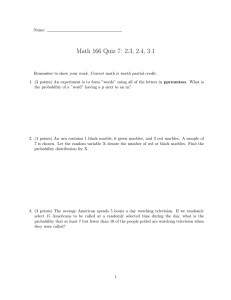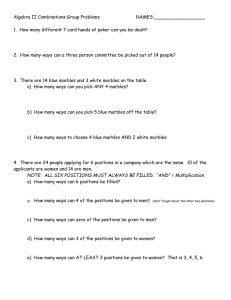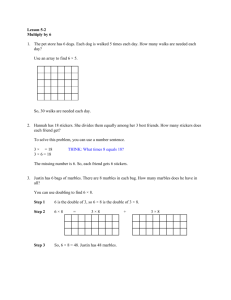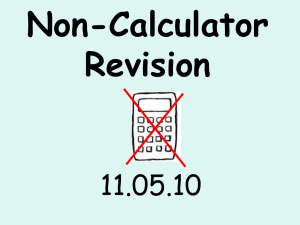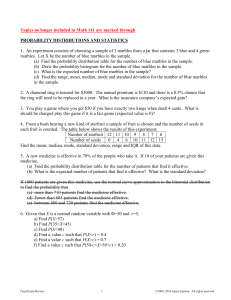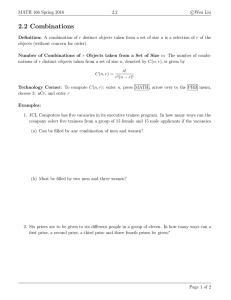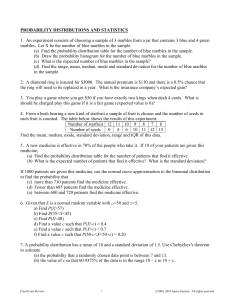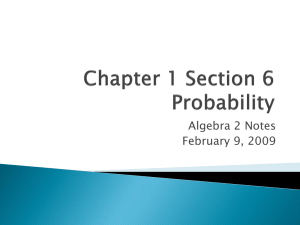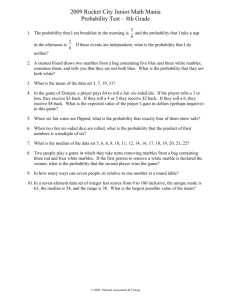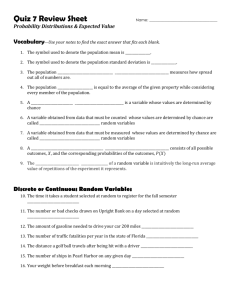Document 10435116
advertisement
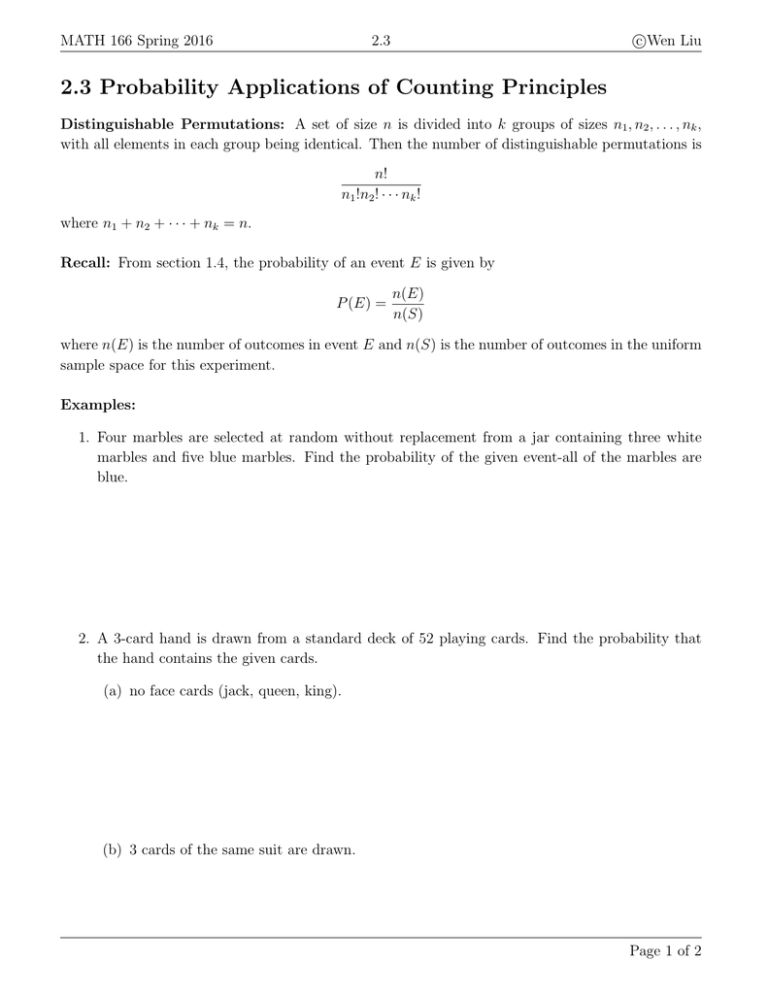
MATH 166 Spring 2016 c Wen Liu 2.3 2.3 Probability Applications of Counting Principles Distinguishable Permutations: A set of size n is divided into k groups of sizes n1 , n2 , . . . , nk , with all elements in each group being identical. Then the number of distinguishable permutations is n! n1 !n2 ! · · · nk ! where n1 + n2 + · · · + nk = n. Recall: From section 1.4, the probability of an event E is given by P (E) = n(E) n(S) where n(E) is the number of outcomes in event E and n(S) is the number of outcomes in the uniform sample space for this experiment. Examples: 1. Four marbles are selected at random without replacement from a jar containing three white marbles and five blue marbles. Find the probability of the given event-all of the marbles are blue. 2. A 3-card hand is drawn from a standard deck of 52 playing cards. Find the probability that the hand contains the given cards. (a) no face cards (jack, queen, king). (b) 3 cards of the same suit are drawn. Page 1 of 2 MATH 166 Spring 2016 2.3 c Wen Liu 3. A box has 13 marbles, 6 of which are white and 7 of which are red. A sample of 7 marbles is selected randomly from the box without replacement. (a) What is the probability that exactly 5 are white and 2 are red? (b) What is the probability that at least 5 of the marbles are white? 4. A student studying for a vocabulary test knows the meanings of 12 words from a list of 22 words. If the test contains 10 words from the study list, what is the probability that at least 8 of the words on the test are words that the student knows? Page 2 of 2
